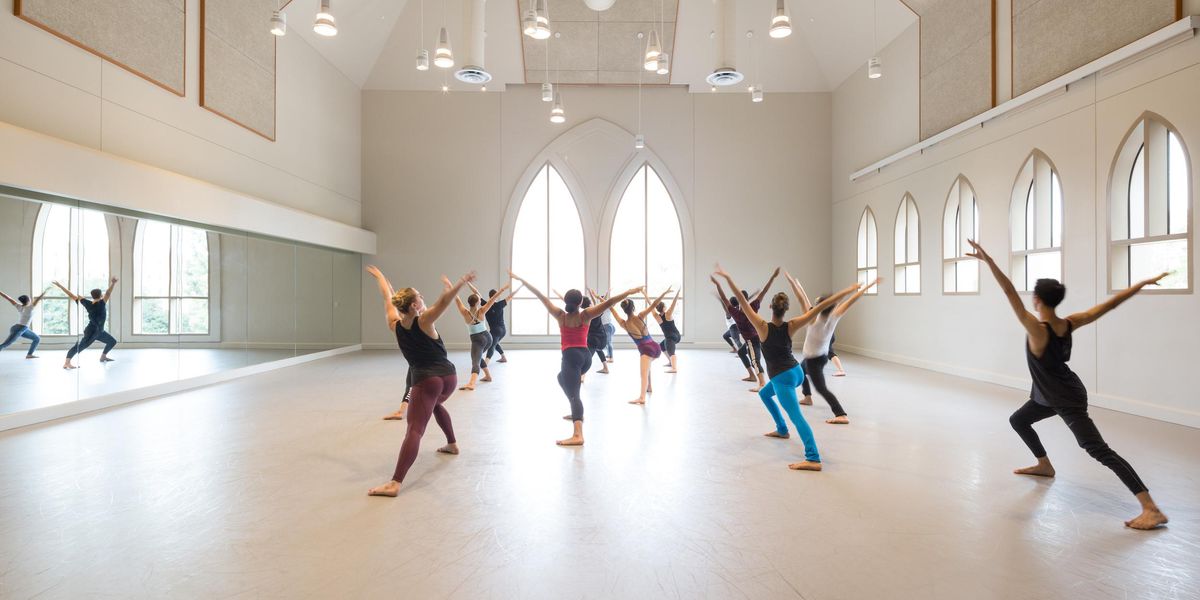The Contemporary Conundrum
Goyo Montero (of Staatstheater Nürnberg Ballett) coached competitors at this year’s Prix de Lausanne in Switzerland. Photo by Gregory Batardon, Courtesy Prix de Lausanne.
When you begin working on a classical ballet variation for competition, you know what you’re getting into. You’ll need to drill the pirouette series in “Lilac Fairy,” or perfect the footwork in Kitri’s Act III solo until you can perform it with precise épaulement—and fan fluttering—in your sleep. But what about when the choreography isn’t set? As more ballet competitions add contemporary rounds to their events, the guidelines for adjudication can get blurry. What exactly are judges looking for, and how can you prepare?
The Big Three: Artistry, Musicality and Technique
Jackson’s 2010 USA International Ballet Competition ballot for contemporary solos asked judges to evaluate dancers’ technical skill, musicality and artistry. “Each element was given a score from 1 to 10 and the judges could write in their comments,” says Hannah Renegar, the competition’s artistic administrator. For former American Ballet Theatre principal and seasoned adjudicator John Meehan, dancers who catch his eye are those who can shed classical ballet tendencies (a held, upright torso, for instance) and adapt to a more grounded movement style. “I’m looking for another dimension within the dancer,” he says. “Contemporary work has a certain release, and some dancers who are very classical struggle with that.”
Ballet West’s artistic director Adam Sklute, who is a frequent Youth America Grand Prix adjudicator, looks for a sense of freedom and expressiveness in the dancer. “I want to see the dancer’s use of her torso and core, and the floor,” he says. “I look for dancers who are unafraid to take chances physically and emotionally.”
Ultimately, though, both Meehan and Sklute note that judges view contemporary solos through a ballet lens. “We still want to see lines, flexibility, extensions and jumping and turning,” says Meehan, who is a jury member for this year’s USA IBC. After all, consider the main goal of competing: earning scholarships to top ballet academies or company traineeships. Sklute explains it this way: “If I’m looking for someone for my company, I want a dancer who can do contemporary work, but I’m not going to take someone who’s not a classical ballet dancer.”
An even playing field?
Unlike classical ballet variations that include specific steps for judges to critique, contemporary solo choreography is often left up to each competitor. According to the guidelines for YAGP for instance, participants should select a piece that shows off their “strengths as a dancer outside of classical ballet.”
“As a judge, you have to be careful not to confuse your like or dislike of the choreography with the artistry of the dancer,” says Sklute. Meehan agrees: “Most people come with newly choreographed contemporary work. But that’s a problem. If a dancer has limited resources—if there’s no choreographer nearby and they cannot afford to pay for a solo—it’s difficult for a student to come up with effective material.”
Some competitions are confronting this issue head on. YAGP includes a list of available choreographers across the U.S. and Canada who may be available to create work for students for a fee, starting at $250. Other competitions are taking this a step further: Even though students show a solo of their choice as part of the application for Prix de Lausanne, those selected to compete in Switzerland arrive with a contemporary solo they’ve learned from an online video, and they receive special coaching during the event. Similarly, dancers competing in Jackson this year will enter the second round with a pre-selected contemporary solo by Trey McIntyre or a contemporary duet by Matthew Neenan. “The playing field will be level and we’ll have concrete elements to judge,” says Meehan. “We’ll see who has put in more work and which dancer has more to offer.”
Showcase your strengths
There are certain advantages, however, to a round of solos with limited guidelines. The talented dancers who advance to the final round of USA IBC present contemporary solos that they’ve commissioned from choreographers or created themselves. “It gives dancers the opportunity to show individuality,” says Renegar. If you have brilliant extensions but lack strong pointe work, presenting a solo in socks or ballet slippers could help keep a positive image in the judges’ minds.
As for extra acrobatics: “The audience loves it when you throw in an aerial,” says Sklute. “It shows that you might also have training in gymnastics, which is great. But it won’t make or break your score.”
Not This Again…
Judges sit through countless hours of contemporary solos. While your score should not necessarily be affected by your solo’s choreography, there are a few trends that the jury members—and audience members—would love to see fade away.
- Get over the angst. “Contemporary dance often translates to slow and moody,” laments Adam Sklute. “Why can’t it be upbeat?”
- Don’t go overboard with props or theatricality. “It’s fun to watch, but it presents a dilemma to the judges if that’s all there is,” says John Meehan. “You cannot give points for a costume or story.”
- If you’ve heard it before, pick something else. “We hear the same pieces of music over and over again,” says Sklute. “The sky’s the limit in contemporary dance! Why do solos constantly sound like car or diamond commercials?”
- Leave out the familiar phrases. “Judges joke about dancers simply performing ballet variations with flexed feet,” says Meehan. “The whole point is to show new elements.”
Above: YAGP adjudicators Franco De Vita, Gailene Stock and Adam Sklute.
Photo by Siggul/Visual Arts Masters, Courtesy YAGP.




